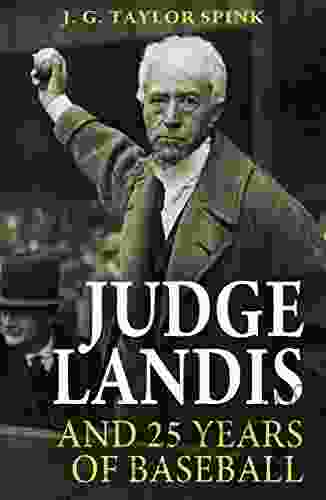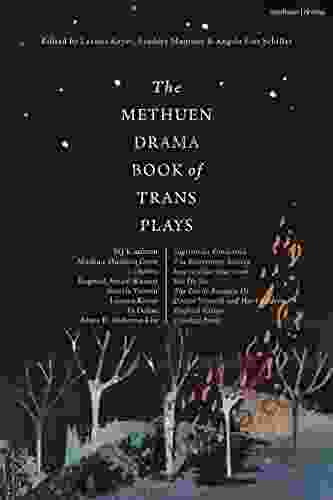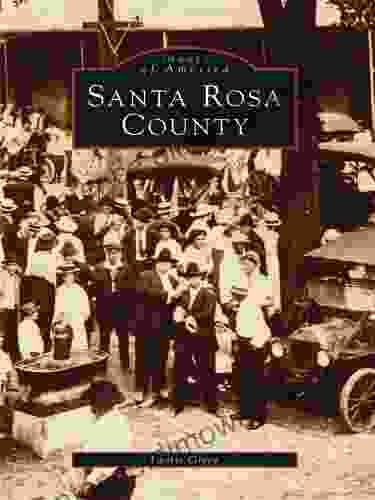Shakespeare and the Imprints of Performance: A Journey Through History and Textual Technologies

Unveiling the Dynamic Legacy of Shakespeare's Plays
William Shakespeare, the renowned playwright and poet, has left an indelible mark on the world of literature and performance. His works have captivated audiences for centuries, inspiring countless adaptations and interpretations. In "Shakespeare and the Imprints of Performance: A History of Text Technologies," scholars delve into the rich history of Shakespeare's plays, examining how they have been shaped by performance practices and the evolution of textual technologies.
From Manuscript to Print: The Early Years of Shakespearean Performance
The origins of Shakespeare's plays lie in the vibrant Elizabethan theater scene. His works were first performed by professional acting companies, such as the Lord Chamberlain's Men. These early performances were often characterized by improvisation and a focus on spectacle, with minimal scenery and elaborate costumes.
5 out of 5
| Language | : | English |
| File size | : | 2521 KB |
| Text-to-Speech | : | Enabled |
| Screen Reader | : | Supported |
| Enhanced typesetting | : | Enabled |
| Word Wise | : | Enabled |
| Print length | : | 253 pages |
As Shakespeare's popularity grew, his plays began to be printed and circulated in manuscript form. These early printed texts, known as quartos, were often inaccurate and incomplete, reflecting the fluidity of performance practices. However, they also provide valuable insights into the early reception of Shakespeare's works.
The Folio Era and the Fixation of the Text
In 1623, the First Folio, a collected edition of Shakespeare's plays, was published. This authoritative edition helped to establish a more standardized version of the text, reducing some of the inconsistencies and errors that had plagued the earlier quartos. The Folio also included valuable commentary and annotations by Shakespeare's contemporaries, further enhancing its significance for scholars and performers.
The publication of the First Folio marked a turning point in the history of Shakespearean performance. With the text more firmly fixed, it became possible to approach his plays with greater precision and fidelity. However, the Folio also introduced its own set of challenges, as performers and directors sought to balance the authority of the text with the demands of stage interpretation.
The Restoration and the Age of Adaptation
After the English Civil War, theaters reopened in England, and Shakespeare's plays experienced a revival. However, the political and social changes of the period led to significant reinterpretations of his works. Performers and adapters often revised and updated Shakespeare's plays to suit the tastes and values of the Restoration audience.
This era saw the rise of the "heroic play," which emphasized spectacle, grandeur, and elaborate staging. Shakespeare's plays were frequently adapted to fit this new theatrical style, with characters rewritten and plots altered to conform to contemporary sensibilities.
The 18th Century: Shakespeare as Literary Master and National Icon
The 18th century witnessed a profound shift in the perception of Shakespeare. He was increasingly seen as a literary master, whose works were worthy of critical study and scholarly analysis. Performers and directors began to approach his plays with greater reverence and fidelity, seeking to restore them to their original form.
The Romantic movement further contributed to Shakespeare's elevated status. Poets and critics such as William Wordsworth and Samuel Taylor Coleridge hailed him as a visionary genius, whose plays embodied the human spirit in all its complexity and grandeur.
The Victorian Era and the Rise of Realism
The Victorian era saw the rise of realism in theater, which emphasized naturalistic settings and authentic performances. Shakespeare's plays were no longer exempt from this trend, and performers and directors sought to create productions that were both visually and emotionally immersive.
The Victorian era also marked the emergence of the "star actor," whose individual interpretation of a Shakespearean character could command the attention of the audience. Actors such as Henry Irving, Ellen Terry, and Sarah Bernhardt became legendary for their iconic performances, leaving a lasting impact on the history of Shakespearean theater.
The 20th Century: Experimentation and Innovation
The 20th century witnessed unprecedented experimentation and innovation in Shakespearean performance. Directors such as Harley Granville-Barker, Tyrone Guthrie, and Peter Brook sought to challenge traditional interpretations and push the boundaries of theatrical convention.
This period also saw the rise of feminist and multicultural approaches to Shakespeare's plays, which re-examined his works from the perspectives of marginalized groups. Performers and directors used the text to explore issues of gender, race, and sexuality, enriching the understanding of Shakespeare's plays as dynamic and ever-evolving.
The Digital Age: New Horizons for Shakespearean Performance
In the digital age, Shakespeare's plays have found new life through technology. The Internet has made it possible to access and share performances from around the world, allowing audiences to experience diverse interpretations and productions.
Virtual reality and augmented reality technologies are also being used to create immersive Shakespearean experiences that transport audiences to the Globe Theatre or other historical settings. These technologies offer new possibilities for engaging with Shakespeare's plays and deepening the connection between performers and audiences.
: The Enduring Impact of Shakespearean Performance
Throughout history, Shakespeare's plays have been shaped by the evolving practices of performance and the development of textual technologies. From the improvised performances of the Elizabethan stage to the meticulously crafted productions of the 21st century, each era has left its own unique imprint on Shakespeare's legacy.
"Shakespeare and the Imprints of Performance: A History of Text Technologies" serves as a testament to the enduring power of Shakespeare's works. By examining the ways in which performance practices and textual technologies have influenced the interpretation and reception of his plays, this book offers a profound insight into the dynamic and ever-changing nature of Shakespearean theater.
5 out of 5
| Language | : | English |
| File size | : | 2521 KB |
| Text-to-Speech | : | Enabled |
| Screen Reader | : | Supported |
| Enhanced typesetting | : | Enabled |
| Word Wise | : | Enabled |
| Print length | : | 253 pages |
Do you want to contribute by writing guest posts on this blog?
Please contact us and send us a resume of previous articles that you have written.
 Book
Book Novel
Novel Page
Page Chapter
Chapter Text
Text Story
Story Genre
Genre Reader
Reader Library
Library Paperback
Paperback E-book
E-book Magazine
Magazine Newspaper
Newspaper Paragraph
Paragraph Sentence
Sentence Bookmark
Bookmark Shelf
Shelf Glossary
Glossary Bibliography
Bibliography Foreword
Foreword Preface
Preface Synopsis
Synopsis Annotation
Annotation Footnote
Footnote Manuscript
Manuscript Scroll
Scroll Codex
Codex Tome
Tome Bestseller
Bestseller Classics
Classics Library card
Library card Narrative
Narrative Biography
Biography Autobiography
Autobiography Memoir
Memoir Reference
Reference Encyclopedia
Encyclopedia Jeffrey Sabins
Jeffrey Sabins Huw Richards
Huw Richards Vegolosi
Vegolosi Ishmael Reed
Ishmael Reed Trevor Hastie
Trevor Hastie Ron Schara
Ron Schara Reds Johnson
Reds Johnson Martha Begley Schade
Martha Begley Schade Jasmine Taylor
Jasmine Taylor Maryjean Wall
Maryjean Wall J D Hutchins
J D Hutchins Michael G Wood
Michael G Wood Valerie Martin
Valerie Martin Paul Reilly
Paul Reilly Patrick Jennings
Patrick Jennings Marcus Oehlrich
Marcus Oehlrich Selina Siak Chin Yoke
Selina Siak Chin Yoke J A Jernay
J A Jernay Kenzie Bishop
Kenzie Bishop Hermann Sudermann
Hermann Sudermann
Light bulbAdvertise smarter! Our strategic ad space ensures maximum exposure. Reserve your spot today!

 Quentin PowellThe Jab and the Unbeatable Floyd Mayweather Jr.: A Knockout Tale of Boxing,...
Quentin PowellThe Jab and the Unbeatable Floyd Mayweather Jr.: A Knockout Tale of Boxing,... Ismael HayesFollow ·13.6k
Ismael HayesFollow ·13.6k Allan JamesFollow ·15.8k
Allan JamesFollow ·15.8k Felipe BlairFollow ·18k
Felipe BlairFollow ·18k Pete BlairFollow ·10.1k
Pete BlairFollow ·10.1k Natsume SōsekiFollow ·3.3k
Natsume SōsekiFollow ·3.3k Jeffrey HayesFollow ·17.6k
Jeffrey HayesFollow ·17.6k Hudson HayesFollow ·11.6k
Hudson HayesFollow ·11.6k Fernando BellFollow ·16.1k
Fernando BellFollow ·16.1k

 Ike Bell
Ike BellShakespeare and the Imprints of Performance: A Journey...
Unveiling the Dynamic Legacy of...

 Wade Cox
Wade CoxEducational Entrepreneurship Today: The Key to...
What is Educational Entrepreneurship? ...

 Jason Reed
Jason ReedLearn the Parts of the Violin: A Comprehensive Guide for...
The violin is a beautiful and...

 Will Ward
Will WardJudge Landis and 25 Years of Baseball: An Unparalleled...
Buckle up for an extraordinary journey through...
5 out of 5
| Language | : | English |
| File size | : | 2521 KB |
| Text-to-Speech | : | Enabled |
| Screen Reader | : | Supported |
| Enhanced typesetting | : | Enabled |
| Word Wise | : | Enabled |
| Print length | : | 253 pages |













